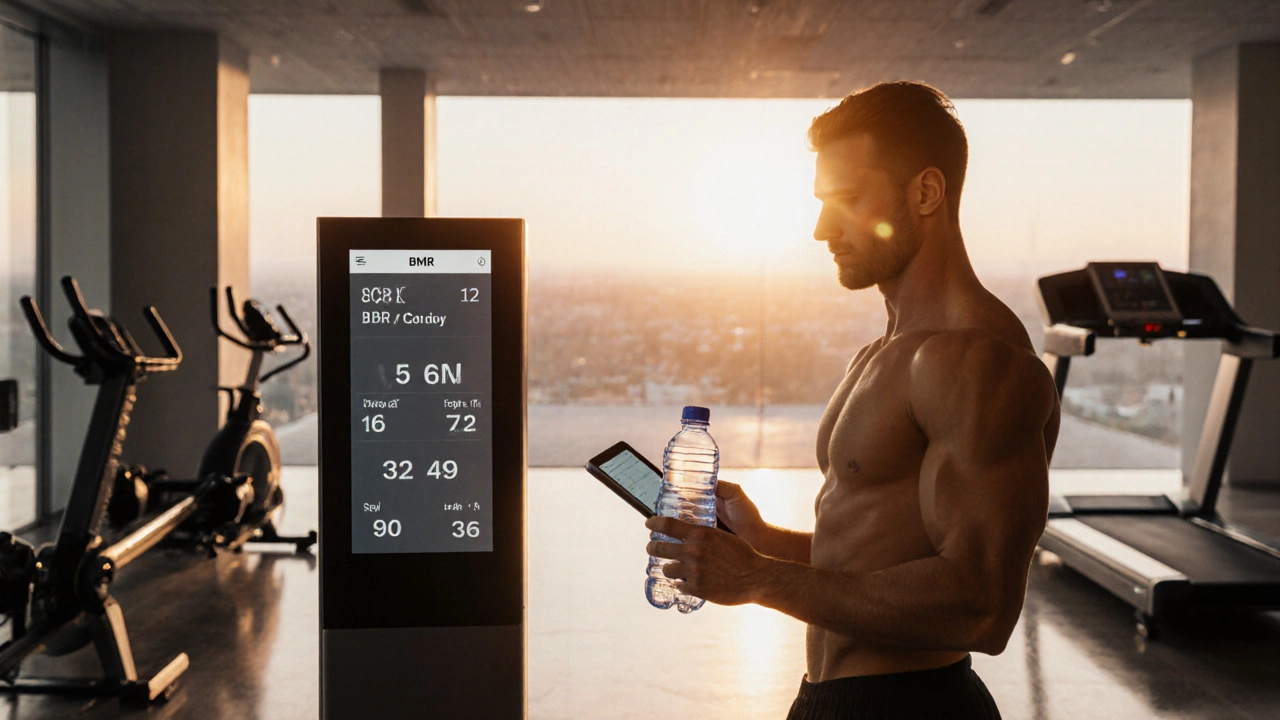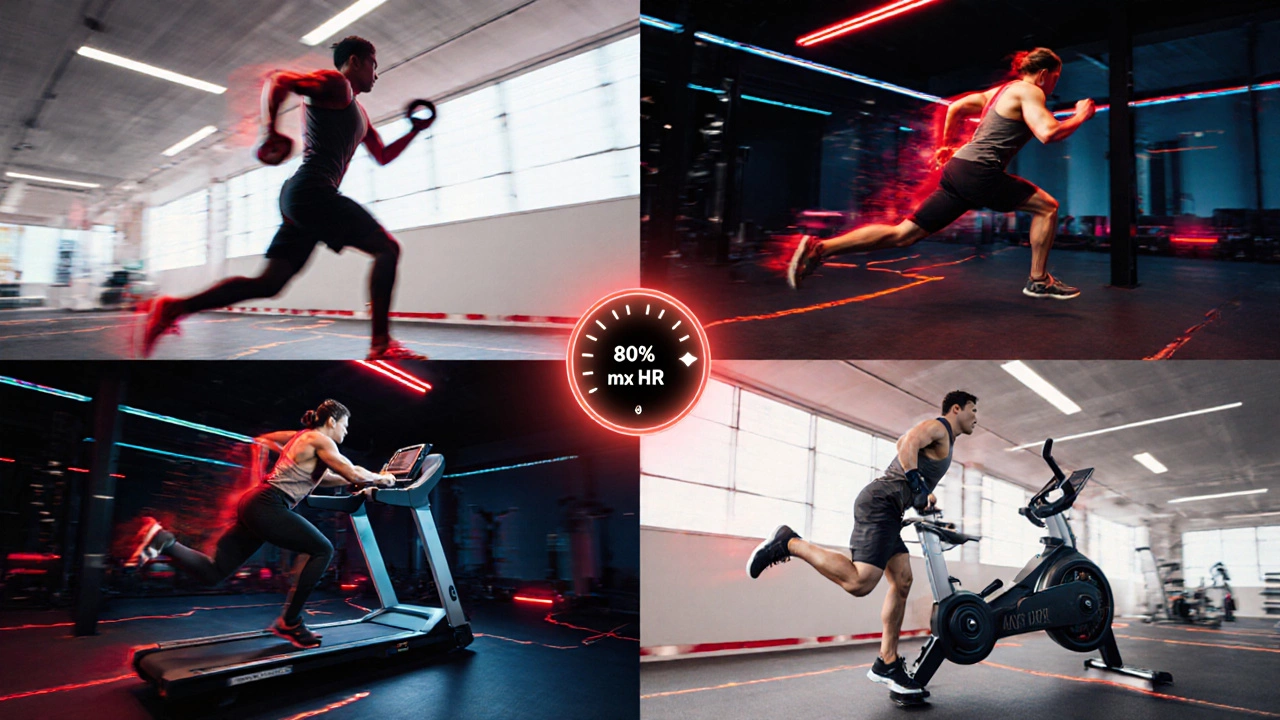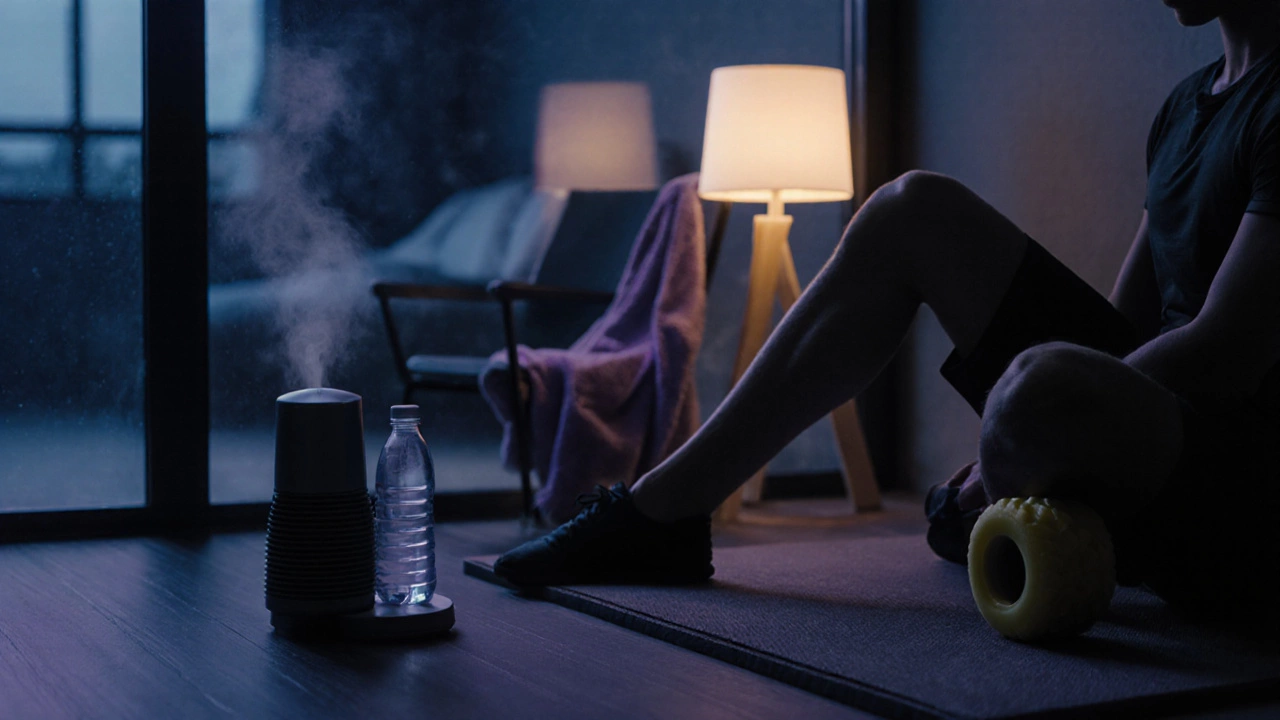Burn 1000 Calories a Day: Proven Gym Workouts & Tips
 Oct, 17 2025
Oct, 17 2025
BMR Calculator
Calculate Your Basal Metabolic Rate
Your Basal Metabolic Rate (BMR) is the number of calories your body burns at rest. This calculator uses the Mifflin-St Jeor equation, the most accurate formula for BMR calculation.
Quick Takeaways
- Mix high‑intensity intervals with strength circuits to hit 1,000kcal in 90‑120minutes.
- Calculate your Basal Metabolic Rate (BMR) first - it tells you how many calories you burn at rest.
- Choose equipment that lets you move continuously: rowing machine, treadmill, kettlebells, or a battle‑rope set.
- Keep heart rate in the 70‑85% of your maximum for maximum fat‑burning efficiency.
- Hydrate, fuel smartly, and respect recovery to avoid injury.
When you hear the term Calorie Burn is the amount of energy your body uses during activity, measured in kilocalories (kcal), you might wonder how many workouts you need to reach a whopping 1,000 kilocalories in a single day.
What Exactly Is a 1,000‑Calorie Day?
Hitting the 1,000‑kcal mark isn’t magic; it’s the result of moving hard enough that your body’s energy expenditure spikes far above the resting level. For an average 70kg (154lb) adult, about 2,500kcal per day is typical maintenance. Adding a 1,000‑kcal workout pushes total daily expenditure to roughly 3,500kcal, which can support a pound of fat loss per week if nutrition stays stable.
Calculate Your Basal Metabolic Rate (BMR)
Before you design a plan, know how many calories you already burn at rest. The Basal Metabolic Rate (BMR) is estimated with the Mifflin‑St Jeor equation:
Men: BMR = 10×weight(kg) + 6.25×height(cm) - 5×age(y) + 5 Women: BMR = 10×weight(kg) + 6.25×height(cm) - 5×age(y) - 161
Example: a 30‑year‑old, 70kg, 175cm male:
BMR = 10×70 + 6.25×175 - 5×30 + 5 = 1,665kcal/day
This baseline tells you the calorie floor; everything you add on top is the actual workout burn.

Key Principles for Burning 1,000kcal
- Intensity matters more than time. Moving at 70‑85% of your maximum heart rate maximizes the metabolic equivalent (MET) value.
- Use large muscle groups - legs, back, chest - because they consume more oxygen.
- Combine cardio with resistance; the latter raises post‑exercise oxygen consumption (EPOC).
- Minimize long rests; keep the average heart rate high.
- Maintain a slight calorie deficit; otherwise you’ll just replace the burned calories with food.
Top Gym Workouts That Torch Calories
Below are the most efficient gym‑based activities, each paired with average calorie‑burn rates for a 70kg person. Numbers come from ACSM MET tables and real‑world testing.
| Exercise | Avgkcal/hr | Duration for 1,000kcal | Equipment Needed |
|---|---|---|---|
| High‑Intensity Interval Training (HIIT) | 900-1,200 | 50‑70min | Bodyweight or light dumbbells |
| Circuit Training | 800-1,000 | 60‑75min | Varied - stations |
| Kettlebell Swings | 750-950 | 65‑85min | Kettlebell (12‑16kg) |
| Rowing Machine | 600-800 | 80‑105min | Rowing ergometer |
| Treadmill Incline Run | 650-850 | 75‑95min | Treadmill (incline 10%+) |
Why HIIT Leads the Pack
High‑Intensity Interval Training, often shortened to HIIT, alternates short bursts (30‑60s) of maximal effort with equal or slightly longer low‑intensity recovery. The metabolic shock raises your heart rate to near‑max, pushes the MET value above 12, and triggers a big EPOC effect - you keep burning calories for up to two hours after the session ends.
Circuit Training: Cardio Meets Strength
In a circuit, you rotate through 5‑8 stations (e.g., squat‑press, pull‑ups, box jumps, kettlebell swings, burpees) with 30‑seconds on, 15‑seconds off. Because you never stop moving, the average heart rate stays high, and you also reap the muscle‑building benefits that keep your basal burn elevated.
Kettlebell Swings - The Ultimate Posterior Chain Engine
The hip‑hinge motion recruits glutes, hamstrings, and core. A 16‑kg swing performed at 20 reps per minute can hit a MET of 10+. Pair swings with goblet squats and a few rows, and you’ve got a calorie‑smashing mini‑circuit.
Rowing and Incline Running: Low‑Impact Powerhouses
Both actions deliver high MET values while sparing joints. Rowing engages the entire back and legs, while a treadmill set at a 12% incline forces the calves and glutes to work harder, lifting the calorie count without pounding the knees.
Sample 2‑Hour "Burn 1,000kcal" Workout Plan
Adjust the timing based on your fitness level. The goal is to keep the average heart rate in the 70‑85% zone.
- Warm‑up (10min) - Light jog or dynamic stretches, HR 50% max.
- HIIT Block (20min)
- 30s sprint on treadmill (incline 10%)
- 30s walk or slow jog
- Repeat 10 times.
- Circuit Round 1 (15min)
- 40s kettlebell swings (16kg)
- 20s rest
- 40s push‑ups
- 20s rest
- 40s box jumps
- 20s rest
- 40s bent‑over rows (dumbbells)
- 20s rest
- Repeat circuit twice.
- Rowing Blast (12min) - 500m row at 2:00/500m pace, rest 30s, repeat 8 times.
- Circuit Round 2 (15min) - Same stations as Round1 but add 30s of burpees after each rest.
- Cool‑down (8min) - Slow walk, foam roll, deep breathing.
Estimated calorie burn for a 70kg athlete: ~1,050kcal.

Tips to Maximize Your Calorie Burn
- Track heart rate. Use a chest strap or reliable wrist monitor; stay in the target zone.
- Fuel smart. Eat a balanced pre‑workout snack (carb+protein) 60min before; avoid heavy meals during the session.
- Stay hydrated. Even a 2% loss in body water can drop performance and calorie output.
- Leverage NEAT. Non‑Exercise Activity Thermogenesis (e.g., moving around the gym, taking stairs) adds up.
- Prioritize sleep. 7‑9hours improves hormone balance, allowing you to push harder.
Common Pitfalls & How to Avoid Injuries
- Skipping warm‑up. Jumping straight into sprints raises injury risk.
- Ignoring form. Bad technique on kettlebell swings or rows leads to lower back strain.
- Overtraining. Doing 1,000‑kcal days 5+ times a week can cause burnout. Aim for 2‑3 sessions, supplement with lower‑intensity days.
- Neglecting recovery. Stretch, foam roll, and consider active recovery sessions.
Frequently Asked Questions
Can I really burn 1,000kcal in a single gym visit?
Yes, but it requires high intensity, minimal rest, and the use of large muscle groups. Most people achieve it in 90‑120minutes using HIIT, circuit training, or a combination of cardio and strength work.
Do I need special equipment?
Not really. Bodyweight HIIT or a set of dumbbells can do the job. However, machines like a rowing ergometer or a treadmill with incline make it easier to hit the calorie target faster.
How often should I try a 1,000‑kcal workout?
Limit it to two or three times a week. Your muscles and nervous system need recovery; otherwise performance drops and injury risk climbs.
Will I lose muscle if I focus only on calorie burn?
Not if you keep strength work in the mix and consume enough protein (1.6‑2.2g per kg body weight). The resistance components of circuits protect muscle mass.
How do I measure the calories I actually burn?
Wear a heart‑rate monitor that estimates calorie expenditure based on HR, age, weight, and gender. For the most accurate data, combine HR data with the MET values of each activity.
Cracking the 1,000‑calorie mark isn’t reserved for elite athletes. With the right mix of intensity, equipment, and smart recovery, most gym‑goers can hit it safely and consistently. Keep tracking, stay focused, and watch the scale respond.